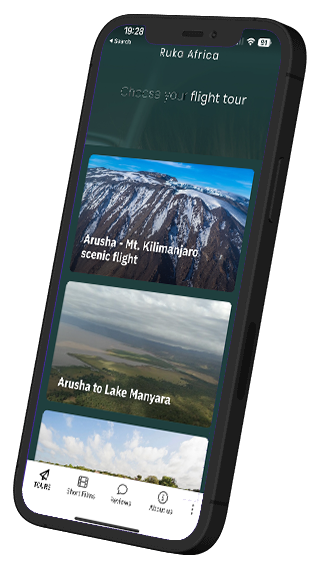Table of Contents
10 amazing features you will see on your Mt Kilimanjaro Scenic Flight
Features along your Mt Kilimanjaro Scenic Flight:
- Mount Meru.
- Arusha National Park.
- Momella Lakes.
- Ngurdoto Crater.
- West Kilimanjaro.
- Mount Kilimanjaro National Park.
- Shira Plateau.
- Glaciers of Kilimanjaro.
- Mawenzi Peak.
- Kibo Peak.
As one of the seven wonders of the natural world and one of Africa’s most iconic features, seeing Mt. Kilimanjaro is a dream come true for most adventurers when visiting Tanzania. Join us on a 1-hour awe-inspiring Kilimanjaro scenic flight where you can experience the “Roof of Africa” from high above the clouds and gorgeous panoramic landscapes rarely seen from the sky.
Discover features on your Kilimanjaro scenic flight
1. Mount Meru
Mount Meru is an active (but currently dormant) volcano located north of Arusha in Tanzania. Located only 70 km from Mount Kilimanjaro, Mt. Meru also has a second peak, called Little Meru standing at 3801 meters tall. At 4562 meters, Mt. Meru is Tanzania’s second-highest mountain, the fourth highest in Africa.
Powerful volcanic eruptions thousands of years ago destroyed much of the eastern side of Mt. Meru resulting in its distinctive horseshoe rim, creating one of the tallest cliffs in Africa, at a towering 1500 meters. You will see a lot of Mount Meru during the course of your Kilimanjaro scenic flight tour.
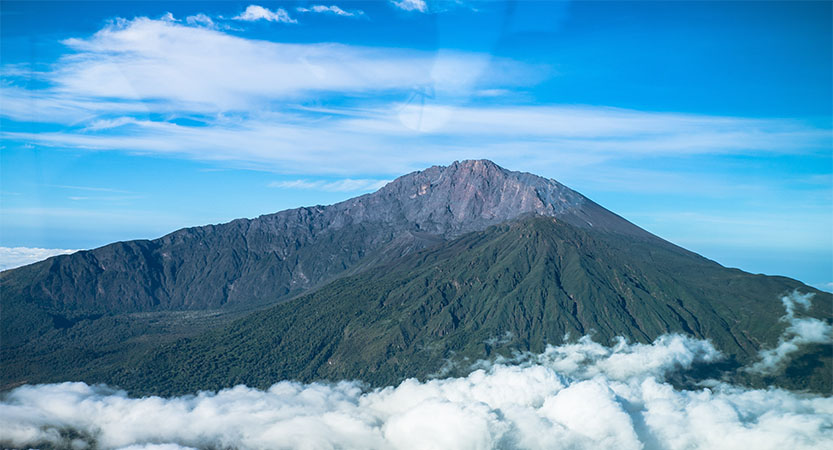
2. Arusha National Park
It is the home to the fourth highest mountain in Africa – Mount Meru (4,566 m). Guests visiting the park will experience exhilarating landscapes ranging from the Meru Crater in the west, the Ngurdoto Crater in the south-east to the grasslands and the alkaline Momella lakes in the north-east, and the green highland forests that blanket its lower slopes.
Arusha National Park is home to a wide variety of animals including the acrobatic black and white colobus monkey, herds of buffalo and warthog, flamingos, resident and migrant waterfowl, shaggy waterbucks, giraffes, zebra herds and dik-dik.
At sunrise and sunset, the stunning snow-covered peaks of Mt. Kilimanjaro, only 50 km away, might shine through the clouds, treating us to the majestic snow-capped peaks of Kilimanjaro, only 50km (30 miles) away.
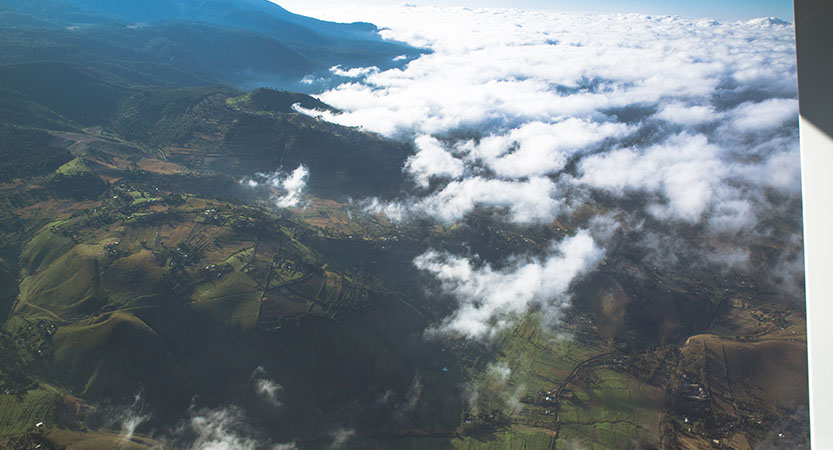
3. Momella Lakes
Another amazing feature you will on Kilimanjaro scenic flight is these alkaline lakes inside Arusha national park.
It serves as a tourist hotspot, with several animals to see including both greater and lesser flamingos, hippos, and several other bird species.
They have a maximum and minimum depth of 31 m and 10 m respectively.
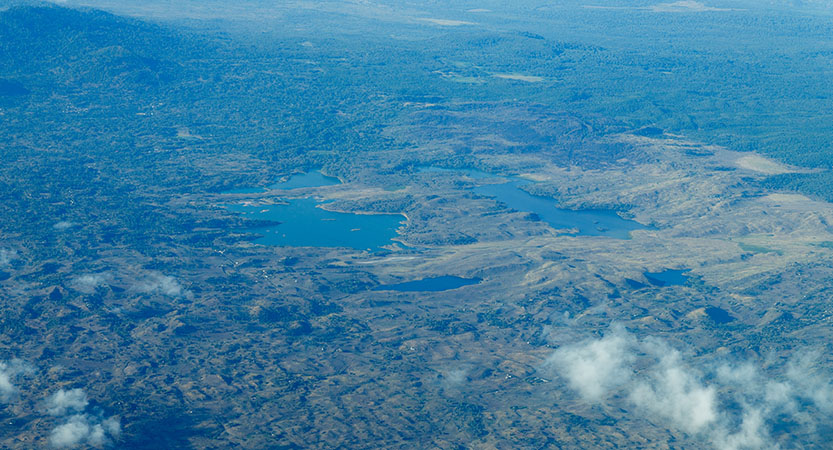
4. Ngurdoto Crater
Located in Arusha National Park, Ngurdoto crater is a volcanic crater shaped like a basin with steep walls covered with dense rainforest and swampy crater floors. It is 3km wide and 400m deep and is a smaller version of the famous Ngorongoro crater.
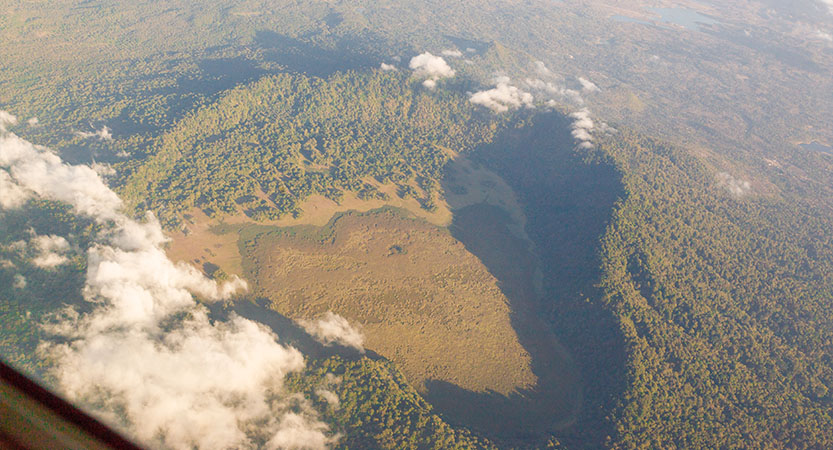
5. West Kilimanjaro
Located south of Kenya’s famous Amboseli National Park, West Kilimanjaro in northern Tanzania is surrounded by East Africa’s natural beauty with Mt. Kilimanjaro’s majestic peaks to the east and Arusha National Park and Mt. Meru to the southwest
Home to the semi-nomadic Maasai people, a traditional tribe known to co-exist with a variety of wildlife, including lions, zebra, cheetah, impala, and eland. The West Kilimanjaro area is made up of wide-open savannahs, mineral-rich flat plains, acacia woodlands, and flat grasslands, including small mountains that range in height from 1000m to 2000m.
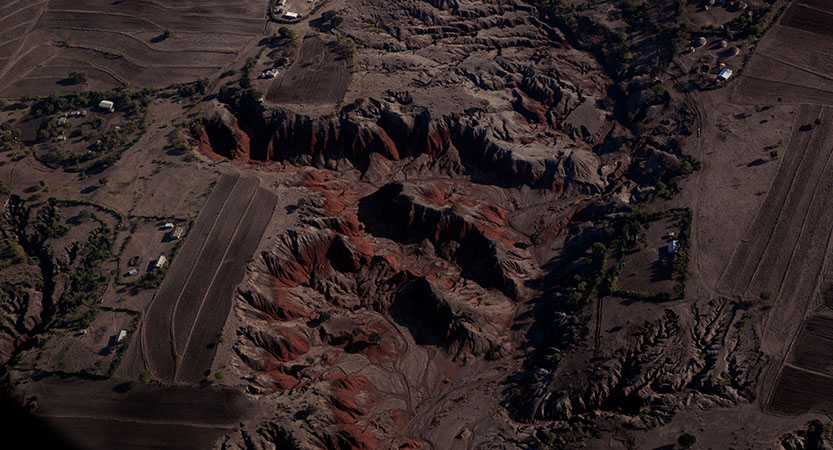
6. Mt Kilimanjaro National Park
Kilimanjaro National Park is home to the highest mountain in Africa and the highest free-standing mountain in the world. Mount Kilimanjaro is made up of three volcanoes, Shira in the west (4,269 m) Mawenzi in the east (5,280 m) and the youngest volcano Kibo (5,895m).
The vegetation on the mountain is also very varied and some 2,500 species of plants are found here. The lower regions of the park are dominated by lush green montane forests with almost 140 species of trees.
A bit higher up, distinctive giant lobelias grace the moorland zone. Above 4,000 m one finds the moonlike desert, where not much grows and the land is full of rocks and dust. Closer to the summit you will see beautiful sights of glaciers and a deep crater.

7. Shira Plateau
Shira plateau is one among the three giant, dormant stratovolcanoes of Mount Kilimanjaro. The other two are named Kibo and Mawenzi.
Shira plateau stretches out for around 13km to the west of Kibo, at an elevation of 3962 meters. Placed on the slopes of Kilimanjaro.
The Shira Plateau shows the remains of an ancient caldera, a volcanic crater that expired around half a million (500,000) years ago. Today, it stands as a World Heritage Site. It was then filled by the lava and debris from the later Kibo eruption. The image below shows the Shira plateau during a Kilimanjaro scenic flight.
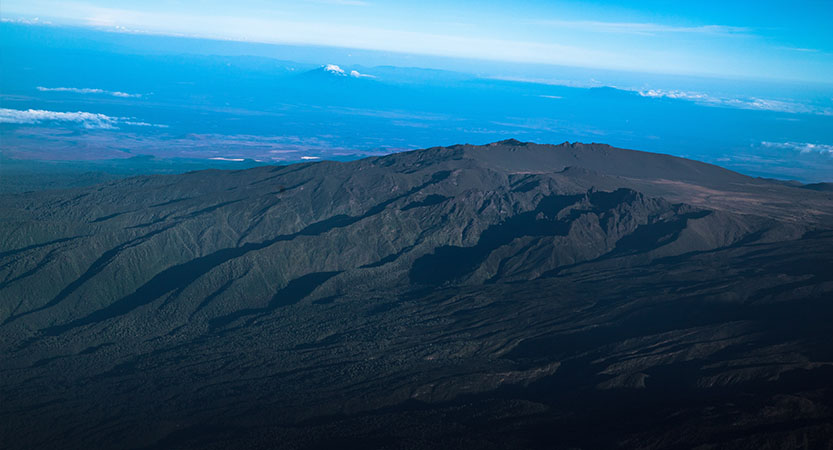
8. Glaciers of Kilimanjaro
Glaciers on Mt Kilimanjaro are a key geographic feature. When approaching to Uhuru peak the incredible glaciers surrounded it, this particular glacier sits just south of Uhuru Peak and is enormous in size.
It is very likely that at one stage the whole mountain summit was covered by an ice cap. According to scientists, this ice cap was probably more than 100 meters deep. Since 1912 Mt Kilimanjaro has lost 82% of its ice cap and since 1962 it has lost 55% of its remaining glaciers.
Mt Kilimanjaro glaciers have however been receding due to climate change. Evidence of glacier retreat can be seen as one ascends to Barafu Camp. You will surely love these views of glaciers during your Kilimanjaro scenic flight.
Vv
9. Mawenzi Peak
Mawenzi is the second-highest peak on Kilimanjaro (5149m) and Kilimanjaro’s Kibo summit the first (5895m).
Mawenzi peak is actually a horseshoe shape, with only the northern side of the crater having been eroded away. Its sides too steep to hold glaciers, there is no permanent snow on Mawenzi, and the gradients are enough to dissuade all but the bravest and most technically accomplished climbers.
Mawenzi’s highest point is Hans Meyer Peak at 5149m but so shattered is this summit, and so riven with gullies and fractures, that there are a number of other distinctive peaks including Purtscheller Peak (5120m) and South Peak (4958m). There are also two deep gorges, the Great Barranco and Lesser Barranco, scarring its north-eastern face. See below a photo of Mawenzi peak shot during a Kilimanjaro scenic flight.

10. Kibo Peak
The top highlight of Kilimanjaro scenic flight is the views of Kibo peak. The Kibo summit is the best-preserved crater on the mountain; its southern lip is slightly higher than the rest of the rim, and the highest point on this southern tip is known as Uhuru Peak. At 5895m, this is the highest point in Africa and the goal of just about every Kilimanjaro trekker. Kibo is also the only one of the three summits which are permanently covered in snow.
Kibo is also the one peak that really does look like a volcanic crater; indeed, there are not one but three concentric craters on Kibo.
Within the inner Reusch Crater (1.3km in diameter) one can still see signs of volcanic activity, including fumaroles, the smell of sulphur and a third crater, the Ash Pit, 130m deep by 140m wide.
The outer, Kibo Crater (1.9 by 2.7km), is not a perfect, unbroken ring. There are gaps in the summit where the walls have been breached by lava flows.
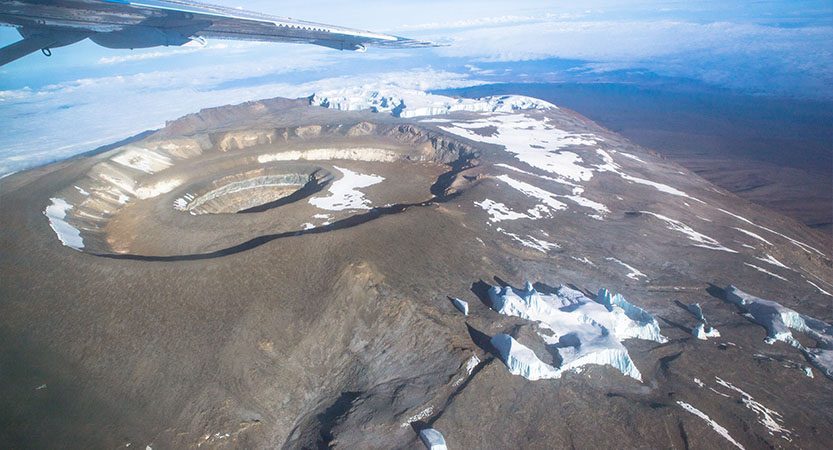
Perhaps the most important feature of Kibo, however, is that its slopes are gentle. This feature means, of course, that trekkers, as well as mountaineers, are able to reach the summit.
Check out Kibo scattered in early morning clouds from Duncan Madden’s Forbes article.
By the end of Kilimanjaro scenic flight, you would have soared above northern Tanzanian’s spectacular features and would want to do it again.
Let your dream take Kilimanjaro scenic flight? See our Kilimanjaro scenic flight itinerary and book your seat.



